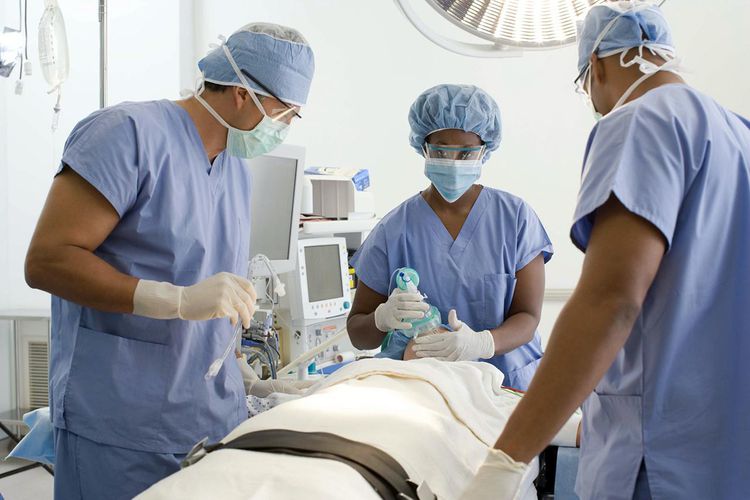Hirschsprung’s Disease: Symptoms, Causes, Treatment
What are the symptoms of Hirschsprung’s disease?
Hirschsprung’s disease is a rare condition that affects the large intestine (colon) and causes problems with bowel movements. The symptoms of Hirschsprung’s disease can vary depending on the age of the affected individual, but common symptoms include:
- Chronic constipation: This is one of the most common symptoms of Hirschsprung’s disease. Infants and children with the condition may have difficulty passing stool, and their stools may be hard and pellet-like.
- Abdominal distension: The abdomen may appear swollen or distended, especially in infants and children.
- Failure to pass meconium: Meconium is the dark, sticky stool that is normally passed by newborns in the first few days of life. Infants with Hirschsprung’s disease may fail to pass meconium within the first 24-48 hours after birth.
- Delayed growth: Children with Hirschsprung’s disease may fail to grow and gain weight at the expected rate.
- Bile-stained vomiting: In severe cases, bile-stained vomit may occur due to a blockage in the intestines.
- Diarrhea: In some cases, particularly in older children and adults, diarrhea may occur, especially if the condition is not diagnosed and treated early.
- Fatigue or irritability: Chronic constipation and other symptoms of Hirschsprung’s disease can lead to fatigue and irritability.
It’s important to note that symptoms of Hirschsprung’s disease can vary widely and may overlap with other conditions, so it’s important to see a healthcare provider for a proper diagnosis if you or your child is experiencing these symptoms.
What are the causes of Hirschsprung’s disease?
Hirschsprung’s disease is a congenital condition, which means it is present at birth. It occurs when nerve cells called ganglion cells are missing from a portion of the large intestine (colon). Ganglion cells are responsible for controlling the muscles that move stool through the intestine. Without these cells, the affected portion of the intestine cannot relax and pass stool effectively, leading to a blockage.
The exact cause of the absence of ganglion cells in Hirschsprung’s disease is not well understood. However, it is believed to result from a failure of certain nerve cells to develop properly during fetal development. Genetic factors may also play a role in the development of Hirschsprung’s disease, as it tends to run in families.
Hirschsprung’s disease can occur on its own or as part of a genetic syndrome, such as Down syndrome or Waardenburg syndrome. In some cases, it may be associated with other congenital anomalies affecting the digestive tract or other parts of the body.
Overall, the exact cause of Hirschsprung’s disease is complex and likely involves a combination of genetic and environmental factors. More research is needed to fully understand the underlying causes of this condition.
What is the treatment for Hirschsprung’s disease?
The main treatment for Hirschsprung’s disease is surgery to remove the portion of the colon that is lacking nerve cells (ganglion cells). This surgery is known as a pull-through procedure and is usually performed in early infancy, although it can be done later in childhood or even in adulthood if the condition is not diagnosed until later.
During the pull-through procedure, the surgeon removes the affected portion of the colon and connects the healthy portion of the colon to the anus. This allows stool to pass through the colon and out of the body normally.
In some cases, additional surgeries may be needed to manage complications or to improve bowel function. For example, a temporary colostomy may be performed to divert stool away from the affected portion of the colon while it heals after surgery.
After surgery, most children with Hirschsprung’s disease are able to pass stool normally, although they may have some ongoing bowel control issues. Some children may require additional treatment, such as medication or dietary changes, to manage these issues.
It’s important for children with Hirschsprung’s disease to receive ongoing care from a healthcare team experienced in managing the condition. Regular follow-up appointments are usually recommended to monitor bowel function and overall health.
Hirschsprung’s Disease: A Summary
Hirschsprung’s disease is a congenital disorder that affects the large intestine (colon). It is present at birth and results from improper development of the intestinal nervous system.
The key features of Hirschsprung’s disease are:
- Absence of ganglion cells: The affected portion of the colon lacks the ganglion cells, which are the nerve cells that control the muscle contractions that move food through the intestines.
- Intestinal obstruction: Without these nerve cells, the affected segment of the colon cannot relax and allow fecal matter to pass through, leading to functional obstruction.
- Usually affects the rectum: The disease most commonly affects the rectum and a portion of the colon just above it, but it can sometimes extend further up the colon.
- Causes constipation: The main symptom in newborns is failure to pass meconium (first stool) along with constipation, abdominal distension, and vomiting.
If left untreated, Hirschsprung’s disease can lead to serious complications like intestinal blockages, ruptures, and enterocolitis (intestinal inflammation). The standard treatment is surgery to remove the affected portion of the colon that lacks ganglion cells.
It is a relatively rare disorder, occurring in about 1 in 5,000 live births. The exact cause is unknown but seems to involve genetic factors.




